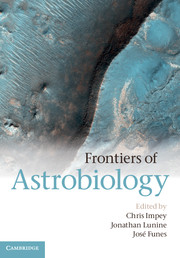Book contents
- Frontmatter
- Contents
- List of contributors
- Part I Introduction
- Part II Origin of Planets and Life
- Part III History of Life on Earth
- 5 The Early Earth
- 6 Evolution of a Habitable Planet
- 7 Our Evolving Planet
- Part IV Habitability of the Solar System
- Part V Exoplanets and Life in the Galaxy
- Index
- Plate Section
- References
7 - Our Evolving Planet
From Dark Ages to Evolutionary Renaissance
from Part III - History of Life on Earth
Published online by Cambridge University Press: 05 December 2012
- Frontmatter
- Contents
- List of contributors
- Part I Introduction
- Part II Origin of Planets and Life
- Part III History of Life on Earth
- 5 The Early Earth
- 6 Evolution of a Habitable Planet
- 7 Our Evolving Planet
- Part IV Habitability of the Solar System
- Part V Exoplanets and Life in the Galaxy
- Index
- Plate Section
- References
Summary
Introduction
Earth records its own history in the physical, chemical, and biological features of sedimentary rocks. In particular, the history of life is recorded by the remains of organisms buried and preserved in accumulating sediments, by physical traces of organisms’ activity in sediments (e.g. burrowing), and by chemical changes wrought by organisms (e.g. oxygen produced by land plants, algae, and cyanobacteria). The process of sediment accumulation, so essential to preservation, has biased the fossil record: organisms that lived in environments where burial was likely are relatively well represented in the geologic record, whereas organisms that lived in habitats characterized by net erosion seldom become fossils.
There is a second bias to the fossil record. The organisms most likely to be preserved as fossils are those that produce “hard parts,” mineralized skeletons or decay-resistant organic compounds such as the lignin in wood. In contrast, organisms with no readily preservable components fossilize only under exceptional circumstances, although some leave a record in the form of “trace” fossils such as tracks and burrows. Some microorganisms produce walls, spores, and extracellular envelopes that also preserve well in accumulating sediments; thus, we have a fossil record of bacteria and unicellular eukaryotes that predates the conventional record of animals and land plants. As in the case of animals and their skeletons, some microorganisms routinely produce preservable structures, whereas others never do. There are also microbial trace fossils, recorded by the influence of microbial mat communities on bedding and stromatolites, distinctive three-dimensional structures formed where large colonies of microbes influenced or controlled the formation, texture, and/or mechanical properties of sediments. In general, then, the fossil morphologies that document early life largely record microorganisms that (1) lived where burial facilitates preservation and (2) made decay-resistant organic walls or sheaths. Cyanobacteria are well represented in Proterozoic sedimentary rocks; Archaea are unknown as microfossils (e.g. Knoll 2003).
- Type
- Chapter
- Information
- Frontiers of Astrobiology , pp. 132 - 154Publisher: Cambridge University PressPrint publication year: 2012
References
- 3
- Cited by



